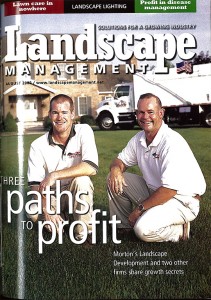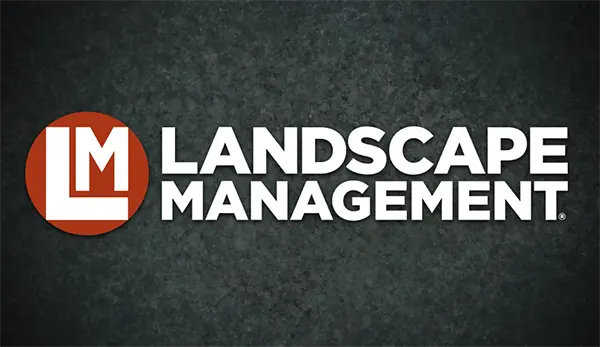
At the conclusion of my weekly visits to the Landscape Management archives, after I’ve placed the past issues back in chronological order and turn my heel away from the wooden bookshelves, the same thought lingers in my mind: We’re pretty good recyclers here at LM.
Not because I pass an impressive amount of plastic bottles and paper in blue bins as I pace to the other side of the office (Are you gathering yet that these “archives” aren’t that fancy?), but because I’m able to recall so many similar stories and concepts that have been reused on the cover over the years.
It’s appropriate to say we operate with the mindset of “if it’s not broken, don’t fix it.”
Our topmost recycled concept: Business profiles.
For an example, reference the January 2014 issue or a copy of July 2013, which share the success stories of Weed Man USA and McKay Landscape Lighting, respectively, for readers to find inspiration or take tips from the companies and apply them to their own businesses.
I stick to the same concept this week by sharing the cover story from the August 2002 issue, titled “Three paths to profit.” Authored by Ron Hall, then-editor-in-chief, and Jason Stahl, then-managing editor, the story spotlights three companies’ procedures for growth.
Morton’s Landscape Development Co.: An add-on to add revenue
Columbia Station, Ohio-based Morton’s Landscape Development Co. reported a $2 million revenue in 2002. The bulk of its profits came from the company’s division, Air-O-Mulch, a mulch spreading service it offered to clients and by subcontracts to other landscape companies.
President Barry Morton purchased his first mulching unit in 1997 for his team to save time on carting and spreading mulch by hand. In 1998, he launched Air-O-Mulch as another revenue source.
Of how the add-on service benefitted business, Morton said, “It hasn’t necessarily grown the landscape company but it’s helped because revenue starts coming in earlier in the year.”
Estes Landscape and Estes Maintenance: The more, the merrier
Based in Sharpsburg, Ga., Estes Landscape, a design/build company, and Estes Maintenance, a mowing/trimming company, reported a combined $2.5 million revenue in 2002.
President Rob Estes’ “path to profits” was to surround his companies with related businesses to attract a range of leads. In what he called a “business park” arrangement, Estes based his businesses at a 14-acre facility that he shared with five other noncompeting, but relatable businesses—a lawn care company, a tree service firm, a hardscape company, sprinkler business and nursery.
“The more people and potential customers that we can attract to this location, the more exposure that our companies will get,” Estes said.
Sponzilli Landscape Group: Slow and steady
Sponzilli Landscape Group, based in Totawa, N.J., reported a $4 million annual revenue in 2002.
It’s five-step growth process:
- Step back and take a snapshot of your business.
- Analyze the “numbers,” or the budget.
- Get everyone on board with your strategy.
- Formulate a plan of attack.
- Have fun.
Co-owner Jason Sponzilli said the firm singled out three of it strongest areas—customer service, high quality and quick response. Slow and steady growth in those areas was the key, Sponzilli said, because if the firm rushed to higher its gross revenue, then it would sacrifice offering high-quality service.

